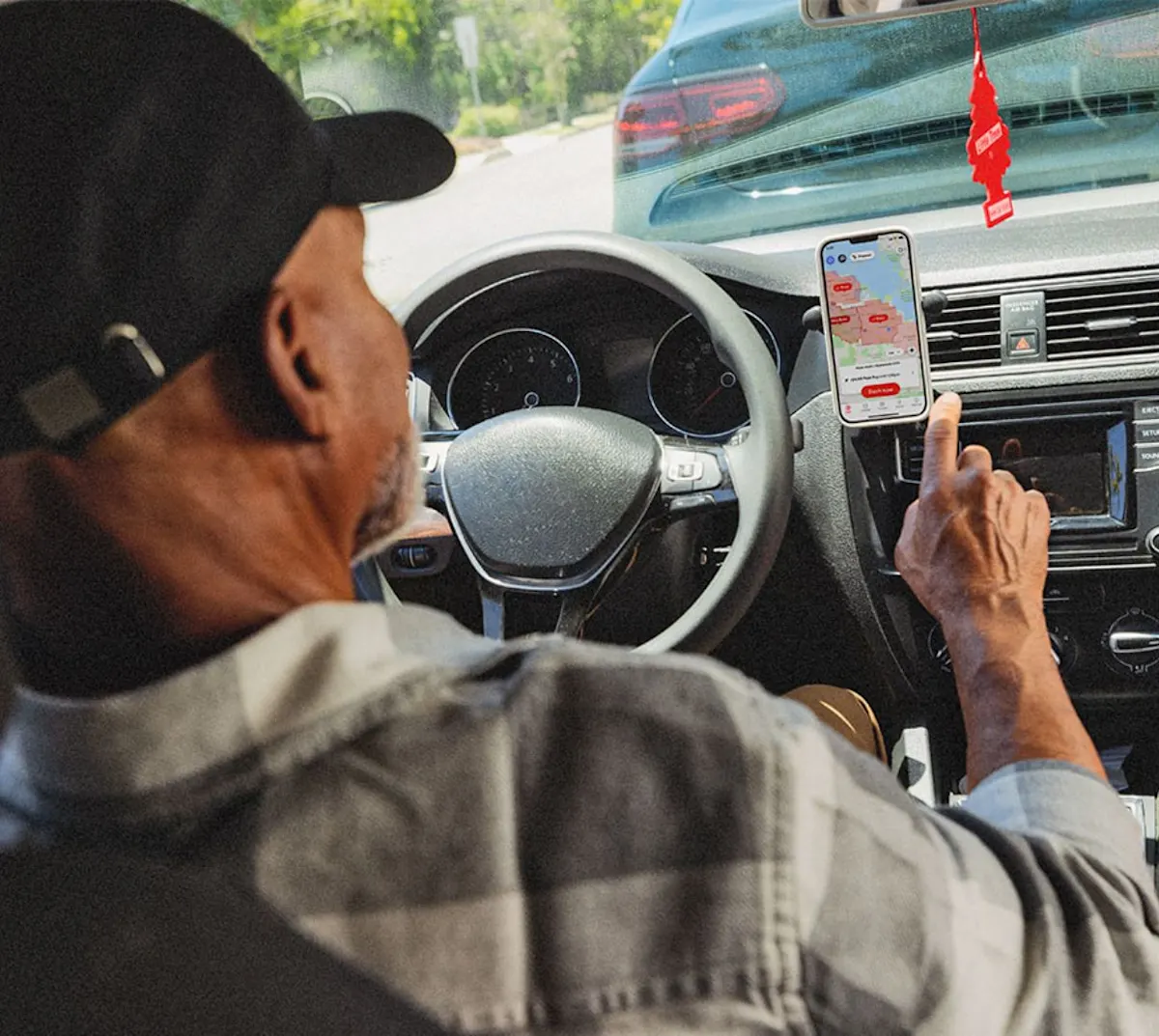As a Dasher, you can control your schedule, but you can't control the weather. Driving in bad weather is sometimes inevitable, so preparation is key. Of course, if you feel unsafe or uncomfortable traveling in the conditions — no matter what they may be — remember that it’s always your choice whether or not to dash.
This resource, along with DoorDash safety features and safety information, offers tips to give Dashers more confidence on the road and help them stay safe.
How to prepare to drive in bad weather
Dasher safety is always a priority for DoorDash. Here are some general tips to keep in mind, especially during bad weather.
Service your vehicle
Before dashing, keep your vehicle maintenance up to date. From worn brake pads to low tire pressure, falling behind on upkeep can increase risk under difficult conditions, so have your ride checked by an expert on a regular schedule.
Prioritize safety
While dashing in poor weather conditions, pay close attention to speed limits and follow the rules of the road, including slowing down when roads may be slippery or when there's low visibility. But above all, prioritize safety. If weather conditions seem too risky, trust your instincts and wait until it's safe to get on the road again.
Wear a seatbelt
Regardless of weather conditions, wearing a seatbelt at all times is critical to road safety.

Driving in the rain
Whether it's a light shower or a downpour, experienced Dashers know that driving in the rain demands caution. Slippery roads can affect braking, so accelerate slowly in wet weather and keep extra distance between you and the car in front of you. Hydroplaning (also known as aquaplaning) can cause a vehicle's wheels to slip with even a minimal amount of water on the road.
Rain is more likely to pool on the edges of a road, so drivers should also try to stick to middle lanes when it's raining. Remember that if the rain is ever too heavy, you can either pause or stop dashing — and always follow local guidance in any extreme weather.
Finally, don't forget about your windshield wipers! Experts suggest replacing your wipers every 12 months, or as needed, to ensure maximum visibility on inclement days.
Driving in fog
It's not only rain and snow that can impact visibility — fog can be just as difficult to drive in. Fortunately, there are some easy steps that Dashers can take to increase safety when driving through fog:
Avoid using high beams: In the case that your vehicle doesn't have fog lights, use regular, low-beam headlights. Don't use high beams! They can actually cause glare and make it harder to see in foggy conditions.
Maintain enough distance: Reduced visibility can slow reaction time, so remain vigilant about leaving extra room between your vehicle and the car ahead.
Signal early: Give the vehicle behind you advance notice of your actions — signaling ahead of time can help the vehicles behind you anticipate your movements.
Driving in snowy conditions
Driving in snow can be a challenge, even for experienced drivers. As snow builds up on the roads, it can take longer to reach your destination, so it's important to plan your route ahead of time when driving in bad weather.
Icy roads can be a severe hazard — especially black ice, which can be very challenging to spot. When driving in cold weather, take turns slowly and proceed with caution, even when there's no visible ice on the road. Use extra caution when driving early in the morning and evening, when black ice is more likely to form.
Dashers who live in colder climates may require extra maintenance for their vehicles, as lower temperatures can affect brake pads and other vehicle functions. Stay prepared by testing brakes, signal lights, and all your vehicle's safety features before dashing.

Driving in extreme heat
A sunny day may be a great time to dash, but there are additional considerations to be aware of when driving in extreme heat conditions. These tips can help mitigate heat-related issues:
Stay hydrated: Dehydration can reduce concentration and increase driver errors. Drivers should stay alert for signs of dehydration like dry mouth and dizziness, and consider keeping a water bottle handy to hydrate regularly.
Protect your eyes: Sunglasses, particularly those with polarized lenses to reduce glare, help keep visibility higher while driving in bright sun.
Keep the temperature down: Using your vehicle's air conditioning when possible helps regulate heat and humidity. It's also an added relief for your customers!
Take breaks: Heat affects everyone differently. On very hot days, make sure to keep cool and take breaks if you need to.
Safety support for Dashers
DoorDash takes Dasher safety seriously. With SafeDash, Dashers can access emergency support around the clock, and if the weather becomes extreme, DoorDash will activate the Severe Weather Protocol and adjust operations in impacted areas to help Dashers stay safe.
Most importantly, trust your instincts and avoid dashing in conditions that make you feel unsafe. And when you are driving in bad weather — whether rain, snow, fog, or heat — you can use these tips to help navigate these conditions.
Ready to become a Dasher? Sign up today.



